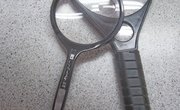Learning materials in teaching are crucial to the success of student achievement. That is, the instructional components of lesson planning in teaching depend on the selection of teaching materials. "Teaching materials" is a generic term used to describe the resources teachers use to deliver instruction. Teaching materials can support student learning and increase student success. Ideally, the teaching materials will be tailored to the content in which they're being used, to the students in whose class they are being used, and the teacher. Teaching materials come in many shapes and sizes, but they all have in common the ability to support student learning.
Examples
Teaching materials can refer to a number of teacher resources; however, the term usually refers to concrete examples, such as worksheets or manipulatives. Learning tools or games help students develop new knowledge. As students develop new learning skills, they practice with new learning tools. Teaching materials are different from teaching resources, the latter including more theoretical and intangible elements, such as essays, support from other educators, and/or places to find teaching materials.
Student Learning Support
Learning materials are important because they can significantly increase student achievement by supporting student learning. For example, a worksheet may provide a student with important opportunities to practice a new skill gained in class. This process aids in the learning process by allowing the student to explore the knowledge independently as well as providing repetition. Learning materials, regardless of what kind, all have some function in student learning.
Lesson Structure
Learning materials can also add important structure to lesson planning and the delivery of instruction. Particularly in lower grades, learning materials act as a guide for both the teacher and student in that they offer a valuable routine. For instance, if you are a language arts teacher and you teach new vocabulary words every Tuesday, knowing that you have a vocabulary game to provide the students with practice regarding the new words will both take pressure off of you and provide important practice (and fun) for your students.
Differentiation of Instruction
Instructional differentiation is also a part of the learning experience in the classroom. The learning materials differentiate according to the types of learning styles. Differentiation of instruction is the tailoring of lessons and instruction to the different learning styles and capacities within your classroom. Learning materials such as worksheets, group activity instructions, games, or homework assignments all allow you to modify assignments to best activate each individual student's learning style.
Acquiring Teaching Materials
Attaining teaching materials is not difficult. There are plenty of instructional resources to support lesson planning and teaching. The Internet has many resources for teachers, most of them free, that can significantly increase the contents of your teaching toolbox. You can also make your own materials. Every learning material you develop will be an asset to you when you next teach a similar unit. An investment of time or money in good teaching materials is an investment in good teaching.
Related Articles
References
Writer Bio
Jocelyn Right has been writing professionally since 2008. Her work includes promotional material for a small business and articles published on eHow. She enjoys writing about issues in education, the arts, nature, health, gardening and small-business operations. Right holds a Bachelor of Arts in English and psychology and a Master of Arts in education.











